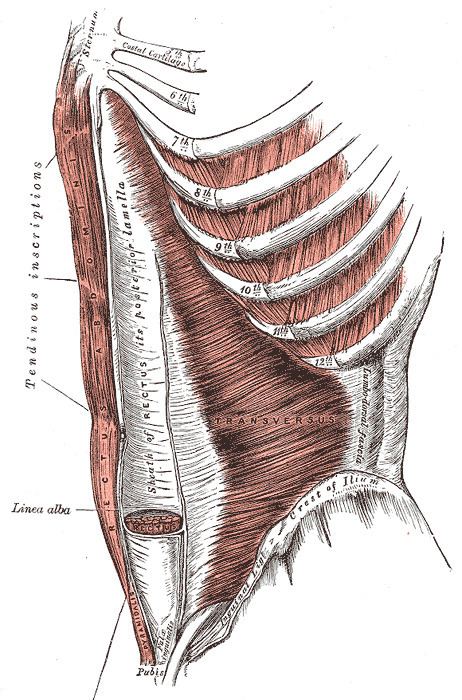Latin musculus pyramidalis | ||
 | ||
Artery Inferior and superior epigastric arteries | ||
The pyramidalis is a small and triangular muscle, anterior to the rectus abdominis, and contained in the rectus sheath.
Contents
Attachments and actions
Inferiorly, it attaches to the pelvis in two places: the pubic symphysis and pubic crest, arising by tendinous fibers from the anterior part of the pubis and the anterior pubic ligament.
Superiorly, the fleshy portion of the muscle passes upward, diminishing in size as it ascends, and ends by a pointed extremity which is inserted into the linea alba, midway between the umbilicus and pubis.
Therefore, when contracting, it has the function of tensing the linea alba.
Variations
The pyramidalis muscle is absent in 20% of people. This muscle may be absent on one or both sides; the lower end of the rectus then becomes proportionately increased in size.
Occasionally it is double on one side, and the muscles of the two sides are sometimes of unequal size. It may also extend higher than the usual level.
Innervation
The muscle is innervated by the ventral portion of T12.
Blood supply
The inferior and superior epigastric arteries supply blood to this muscle.
Surgical landmark
While making the longitudinal inscision for a classical caesarean section the pyramidalis is used to determine midline and location of the linea alba.
